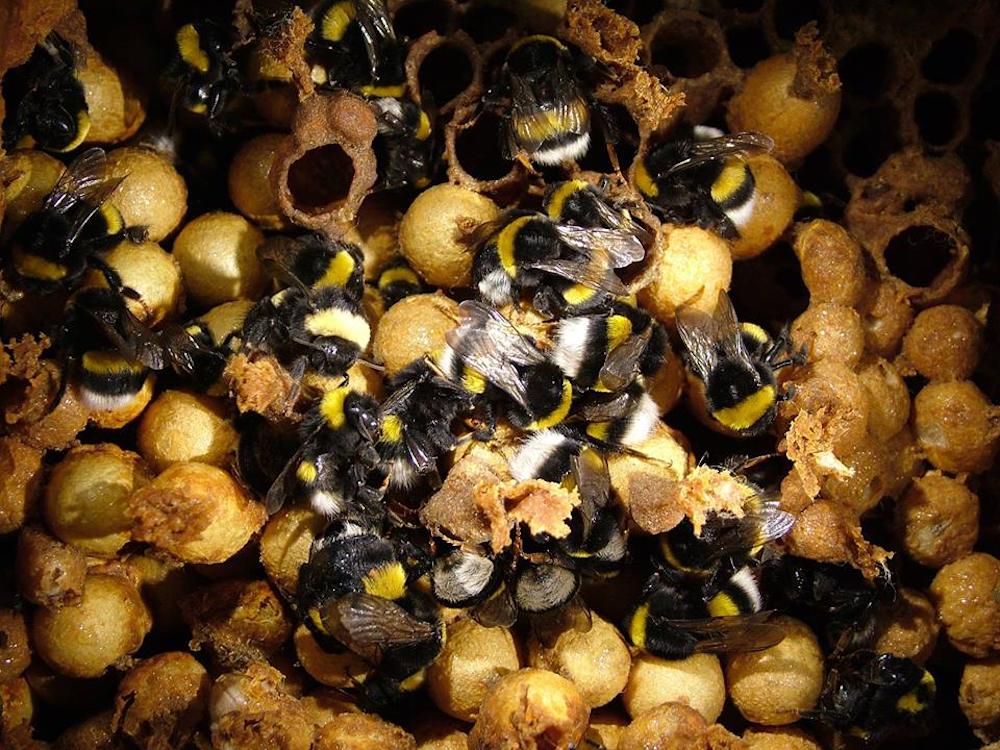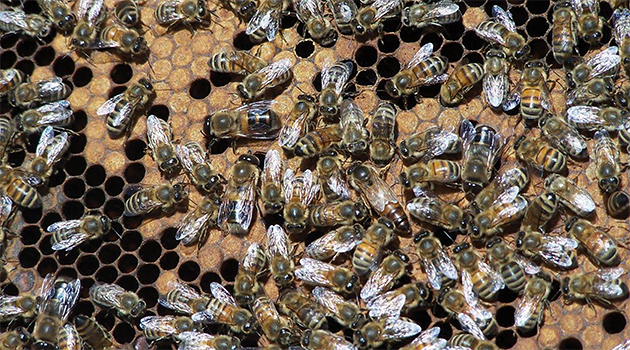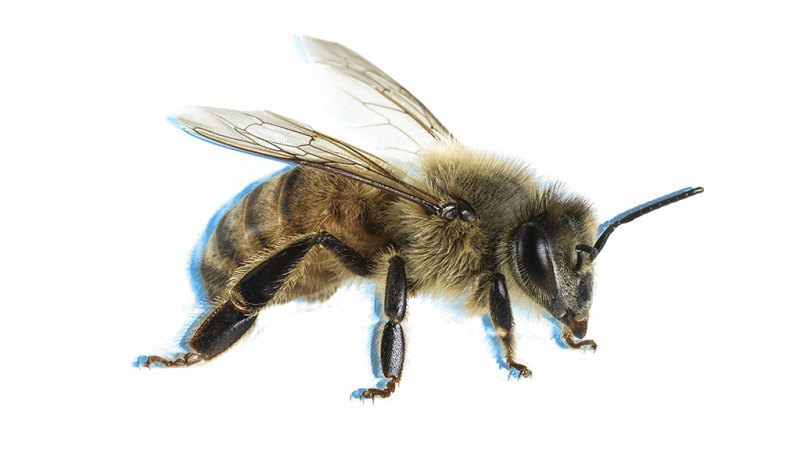
Get ready to explore the mesmerizing world of bees as we take a peek inside their hive minds. In this fascinating article, we uncover the intricate internal systems of these tiny creatures that make them such efficient and organized social insects. From their remarkable communication methods to their complex division of labor, get ready to be amazed by the capabilities of these incredible creatures. So, grab your metaphorical beekeeper suit and join us on this journey into the buzzing world of bees!
Communication Among Bees
Bees have a fascinating way of communicating with each other, and one of the most intriguing methods they use is through their dance language, known as the waggle dance. When a forager bee returns to the hive after finding a promising food source, it performs a series of intricate movements that relay vital information to other bees. The waggle dance consists of a combination of figure-eight movements and buzzing sounds, and the angle at which the dance is performed communicates the direction of the food source in relation to the sun. The duration and intensity of the waggle dance also convey the distance and quality of the food source. This remarkable dance language allows bees to share crucial information and ensure efficient food collection for the entire hive.
Another important means of communication among bees is through the use of pheromones and chemical signals. Bees have specialized glands that produce pheromones, which are chemical substances that convey messages to other members of the hive. For example, when a queen bee emits a specific pheromone, it signals to the worker bees that the queen is healthy and present in the hive. This helps maintain order and stability within the colony. Additionally, pheromones are used to mark specific locations or sources of food, guiding other bees to valuable resources. The ability of bees to communicate effectively through pheromones is crucial for the coordination and functioning of the entire hive.
Organization of the Beehive
The beehive is a remarkably organized and efficient structure, with each bee having a specific role and responsibility. There are three main types of bees within the hive: worker bees, drones, and the queen bee. Worker bees, as the name suggests, are responsible for the majority of the hive’s tasks, including foraging, cleaning, building, and taking care of the larvae. Drones, on the other hand, are male bees whose main purpose is to mate with the queen bee. Lastly, the queen bee is the sole reproductive female in the colony and is responsible for laying eggs to ensure the survival of the hive.
The queen bee holds a pivotal role in the organization of the hive. Not only is she responsible for the production of eggs, but she also emits pheromones that maintain the unity and social structure of the colony. These pheromones help regulate the behavior of worker bees and prevent them from developing into new queens. Without the presence and influence of the queen bee, the hive can quickly descend into chaos. The queen’s role and importance demonstrate the intricate and interdependent nature of the beehive’s social organization.

Building and Maintaining the Hive
Bees are exceptional architects, with their construction skills evident in the creation of honeycombs. Honeycombs are hexagonal wax structures that play a crucial role in the hive’s functioning. The construction of honeycombs begins with worker bees secreting wax from their glands and shaping it into hexagonal cells. These cells serve multiple purposes, including storing honey, providing nurseries for developing larvae, and creating storage space for pollen. The hexagonal shape of the honeycomb is not only aesthetically pleasing but also maximizes the use of space while maintaining structural integrity.
One of the most impressive abilities of bees is their precise temperature regulation within the hive. Bees are able to maintain a consistent temperature of around 93 degrees Fahrenheit (34 degrees Celsius) within the hive, regardless of external weather conditions. This is achieved through a combination of behavioral and physiological adaptations. In colder temperatures, bees huddle together to generate warmth, while in hotter temperatures, bees fan their wings to create a cooling breeze. Additionally, bees can regulate the airflow within the hive by strategically opening and closing certain entrances. This remarkable temperature regulation ensures the survival and well-being of the entire colony.
Foraging Strategies and Food Collection
Foraging for food is a crucial task for bees, as it provides sustenance for the hive. Bees employ various strategies to find and collect food efficiently. Scouting is one such strategy, where a small group of worker bees ventures out in search of new food sources. These scout bees explore their surroundings, relying on their excellent vision and sense of smell to locate potential nectar and pollen sources. Once they find a promising location, they communicate the information to other bees through their waggle dance and pheromones.
Communication about food locations is essential to ensure optimal food collection. When a forager bee discovers a valuable food source, it returns to the hive and communicates the location to other worker bees. This is achieved through the waggle dance, where the direction, distance, and quality of the food source are communicated. The combination of dance movements and pheromones helps guide other bees to the specific location, resulting in efficient food collection for the entire colony. The ability of bees to communicate and coordinate their foraging efforts highlights their highly developed social structure.

The Intricate Social Hierarchy
Within the beehive, a complex social hierarchy exists, with different bees having specific roles and responsibilities. The most numerous members of the colony are the worker bees. Worker bees perform a wide range of duties, including foraging, cleaning the hive, caring for the larvae, and protecting the hive. They are responsible for the day-to-day operations of the colony and ensure its survival. Worker bees are all female and derive their name from their tireless work ethic and dedication to the hive.
The development of new queens is another crucial aspect of the social hierarchy within the hive. When the colony decides to create a new queen, some worker bees will modify the cells to create queen cells. The queen lays eggs in these specialized cells, and the larvae that hatch from these eggs are fed a special diet called royal jelly, which triggers their development into new queens. The existence of multiple queens within a hive can lead to conflict and division, so the worker bees take measures to eliminate all potential rivals except for one. This careful control over the number and development of new queens helps maintain order and stability within the hive.
Swarm Behavior and Reproduction
One of the most dramatic events in the life of a honeybee colony is the formation of a swarm. Swarming occurs when a hive becomes overcrowded and the bees need to establish a new colony. A swarm typically consists of thousands of bees led by a queen, who flies out of the hive accompanied by a swirling mass of worker bees. As the swarm settles on a temporary resting place, scout bees are sent out to search for a suitable location to build a new hive and start a fresh colony.
Swarm communication and decision-making is a critical aspect of this process. When scout bees return with potential nesting sites, they perform a “vibrational dance” on the surface of the swarm, conveying information about the quality and suitability of the locations they have discovered. Other bees carefully assess these dances and collectively decide on the best option. Once a consensus is reached, the swarm takes flight again, following the queen to the chosen location. Swarm behavior and reproduction showcase the remarkable adaptability and resilience of bees as they navigate the challenges of colony growth and expansion.

The Life Cycle of Bees
Like all insects, bees go through a series of distinct stages in their life cycle. It begins with the egg stage, where the queen lays eggs in the honeycomb cells. These tiny eggs hatch into larvae, which are helpless and depend on the worker bees for nourishment. The larvae are fed a diet of royal jelly, a nutritious substance produced by the worker bees. As the larvae grow, they molt several times before entering the pupal stage.
During the pupal stage, the larvae undergo metamorphosis and transform into adult bees. The pupa is enclosed in a protective cocoon made from wax, and inside, the body undergoes significant changes. Wings, legs, and other adult features develop, preparing the bee for its emergence as an adult. Finally, after a period of development, the adult bee emerges from the cocoon, ready to contribute to the functioning of the hive. The complete life cycle of bees from egg to adult takes around three weeks, highlighting the remarkable efficiency and productivity of these remarkable creatures.
The Pollination Process
Bees are crucial pollinators, playing a vital role in the reproduction of many plants and helping to maintain the diversity and abundance of plant life. Pollination is the transfer of pollen grains from the male reproductive organs of a flower to the female reproductive organs. As bees forage for nectar and pollen, they inadvertently collect pollen on their bodies, especially on their hairy legs and bodies. When they visit another flower of the same species, some of the pollen rubs off onto the stigma, initiating the pollination process.
The importance of pollinators like bees cannot be understated. They are responsible for pollinating a wide variety of crops, including fruits, vegetables, and nuts. Without pollinators, many plant species would struggle to reproduce, leading to a decline in food production and ecosystem stability. Bees, with their intricate internal systems and precise foraging behaviors, are key contributors to the pollination process, ensuring the continuity and vitality of plant life.
Defending the Hive
The beehive is not only a sanctuary for bees, but it’s also their home and a precious resource that needs protection. Guard bees play a critical role in defending the hive from potential threats, such as predators and intruders. Guard bees are stationed at the entrance of the hive, constantly monitoring for any unusual activity. If an intruder is detected, the guard bees will swarm and attack, using their stingers as a defense mechanism. This coordinated effort to protect the hive ensures the safety and well-being of its inhabitants.
Communication during threats is another essential aspect of hive defense. When a guard bee encounters an intruder, it releases alarm pheromones, signaling to other bees that there is a potential threat. These pheromones can quickly spread throughout the hive, alerting and mobilizing other bees to join the defense. The ability of bees to communicate effectively during times of danger reinforces their cooperative nature and highlights the importance of a unified response to external threats.
Adapting to Environmental Changes
Bees have evolved a range of behavioral and physiological adaptations that enable them to thrive in various environmental conditions. Behavioral adaptations include changes in foraging patterns, nest construction, and communication strategies to accommodate different climates and resource availability. For example, in colder climates, bees may form a cluster in the hive to generate heat and protect the colony from the elements. In hotter climates, bees may reduce their activity during the hottest part of the day to prevent overheating.
Physiological adaptations are also crucial for bees to survive and function optimally. Bees have a specialized exoskeleton that provides protection and waterproofing, allowing them to withstand various weather conditions. They also have a sophisticated circulatory system that helps regulate their body temperature during extreme temperatures. Additionally, bees have developed the ability to adjust their metabolism and enter a state of torpor during periods of food scarcity or harsh conditions, conserving energy until more favorable conditions arise.
In conclusion, the intricate internal systems of bees are a marvel of nature. From their unique communication methods to their well-organized social hierarchy, the life of a bee is filled with fascinating interactions and adaptations. Bees’ ability to construct and maintain their hives, efficiently forage for food, and contribute to the vital process of pollination showcases their incredible contribution to the ecosystem. Understanding and appreciating the complex world of bees allows us to recognize their importance and work towards their conservation and protection. So next time you see a bee buzzing around, remember the incredible journey it has undertaken for the betterment of its hive and the environment as a whole.

